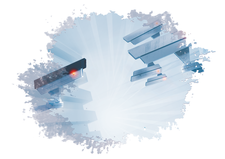Preserving privacy by encrypting block devices
Block Tech

The recent revelations about NSA spying have sparked renewed interest in data encryption. Encrypting at the file level is quick and easy, but if you're looking for an extra dose of protection, try encrypting the whole block device.
The two principal options for encrypting data are hardware based and software based. You can also use both options in combination, but that can be a little overkill – although, in the current climate, perhaps not.
Hardware-based encryption solutions require specialized hardware (see the box "Self-Encrypting Drive"). Software-based approaches, on the other hand, have three options for encrypting your data on a Linux system: (1) encrypting a single file, (2) encrypting a directory (with or without a virtual disk) or filesystem, and (3) encrypting a physical block device.
Encrypting files is fairly straightforward, and several tools are available for doing so, such as bcrypt, NCrypt, and 7-Zip, which can compress and encrypt files using 256-bit AES. The most popular tool is probably GnuPG, which comes with just about every Linux distribution.
[...]
Buy this article as PDF
(incl. VAT)
Buy Linux Magazine
Subscribe to our Linux Newsletters
Find Linux and Open Source Jobs
Subscribe to our ADMIN Newsletters
Support Our Work
Linux Magazine content is made possible with support from readers like you. Please consider contributing when you’ve found an article to be beneficial.

News
-
Parrot OS Switches to KDE Plasma Desktop
Yet another distro is making the move to the KDE Plasma desktop.
-
TUXEDO Announces Gemini 17
TUXEDO Computers has released the fourth generation of its Gemini laptop with plenty of updates.
-
Two New Distros Adopt Enlightenment
MX Moksha and AV Linux 25 join ranks with Bodhi Linux and embrace the Enlightenment desktop.
-
Solus Linux 4.8 Removes Python 2
Solus Linux 4.8 has been released with the latest Linux kernel, updated desktops, and a key removal.
-
Zorin OS 18 Hits over a Million Downloads
If you doubt Linux isn't gaining popularity, you only have to look at Zorin OS's download numbers.
-
TUXEDO Computers Scraps Snapdragon X1E-Based Laptop
Due to issues with a Snapdragon CPU, TUXEDO Computers has cancelled its plans to release a laptop based on this elite hardware.
-
Debian Unleashes Debian Libre Live
Debian Libre Live keeps your machine free of proprietary software.
-
Valve Announces Pending Release of Steam Machine
Shout it to the heavens: Steam Machine, powered by Linux, is set to arrive in 2026.
-
Happy Birthday, ADMIN Magazine!
ADMIN is celebrating its 15th anniversary with issue #90.
-
Another Linux Malware Discovered
Russian hackers use Hyper-V to hide malware within Linux virtual machines.

